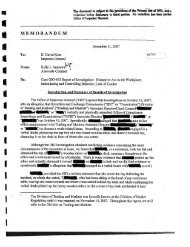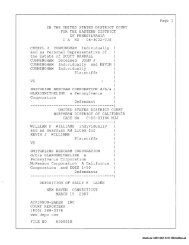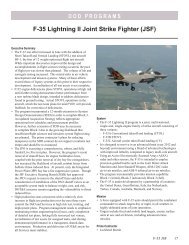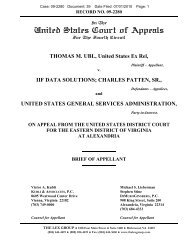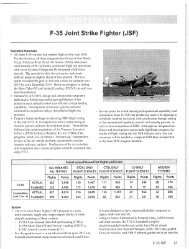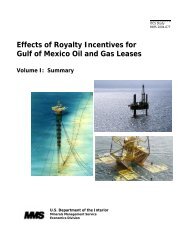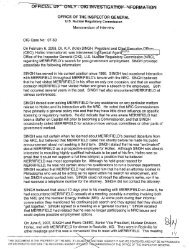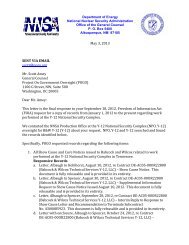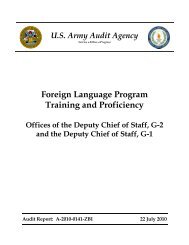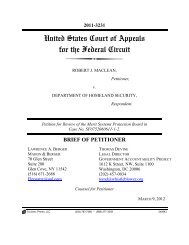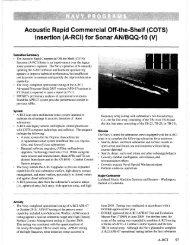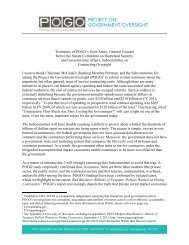The Pentagon Labyrinth
The Pentagon Labyrinth
The Pentagon Labyrinth
Create successful ePaper yourself
Turn your PDF publications into a flip-book with our unique Google optimized e-Paper software.
66 | Confused Alarms of Struggle and Flight: A Primer for Assessing Defense Strategy in the post-Iraq World<br />
Yet the United States is not likely to emerge from Iraq and Afghanistan with any<br />
improvement in its national wealth. We are, it seems, the first imperial power to<br />
be paying for the privilege, with estimates of the total cost of the war running in<br />
the $3 trillion to $5 trillion range. 12 How contraction of the U.S. economy<br />
brought on by the recent recession, with the concomitant need for bailouts and<br />
stimulus packages, will affect our ability to continue paying for expensive<br />
occupations remains to be seen. Our options will be further limited by our<br />
current level of debt, which in 2011 will roughly equal our gross domestic<br />
product for the first time since the end of World War II.<br />
Most of the means for reducing the threat from violence do not involve military<br />
forces and rely instead on trade, diplomacy, commerce, intelligence, law<br />
enforcement, tourism, educational exchange and so on. 13 In a world populated<br />
by human beings, however, there will be times when amicable agreement is not<br />
possible, when religious fervor or nationalistic feelings or a leader’s ego,<br />
combined with miscalculation of the odds of success, leads to the use of force.<br />
Granting these considerations, and other that you will think of, your task could<br />
be restated as rendering a judgment on whether the strategy defines a framework<br />
for procuring and utilizing military forces that would further our national goals<br />
as set forth in the Constitution and elaborated by the administration.<br />
Let’s look more closely at how military forces can be employed in the 21st<br />
century.<br />
<strong>The</strong> Military Toolbox<br />
First, there are conventional forces – the tanks, airplanes, soldiers, ships and so<br />
on like we faced in the 20th century’s world wars. <strong>The</strong>y can wreak enormous<br />
damage and kill huge numbers of people – fatalities in World War I numbered<br />
around 20 million, and numbers in the 50 million to 70 million range are often<br />
“Caribbean banking centers,” for example, hold $165.5 billion and Hong Kong holds<br />
$145.7 billion—and many regard the size and composition of their reserves as state<br />
secrets.<br />
12 Linda J. Bilmes and Joseph E. Stiglitz, “<strong>The</strong> Iraq War Will Cost Us $3 Trillion, And<br />
Much More,” <strong>The</strong> Washington Post, March 9, 2008. Three trillion dollars roughly equals<br />
a $10,000 burden on every man, woman and child in the United States.<br />
13 <strong>The</strong> Department of Defense recognizes the “DIMES” model: diplomacy, information,<br />
military, economic and societal-cultural factors. Walter Pincus, “Irregular Warfare, Both<br />
Future and Present,” <strong>The</strong> Washington Post, April 7, 2008. <strong>The</strong> current secretary of<br />
defense, Robert M. Gates, described this strategy in his article, “A Balanced Strategy,<br />
Reprogramming the <strong>Pentagon</strong> for a New Age,” Foreign Affairs, January-February 2009,<br />
and the president reiterated the point in the May 2010 National Security Strategy.



